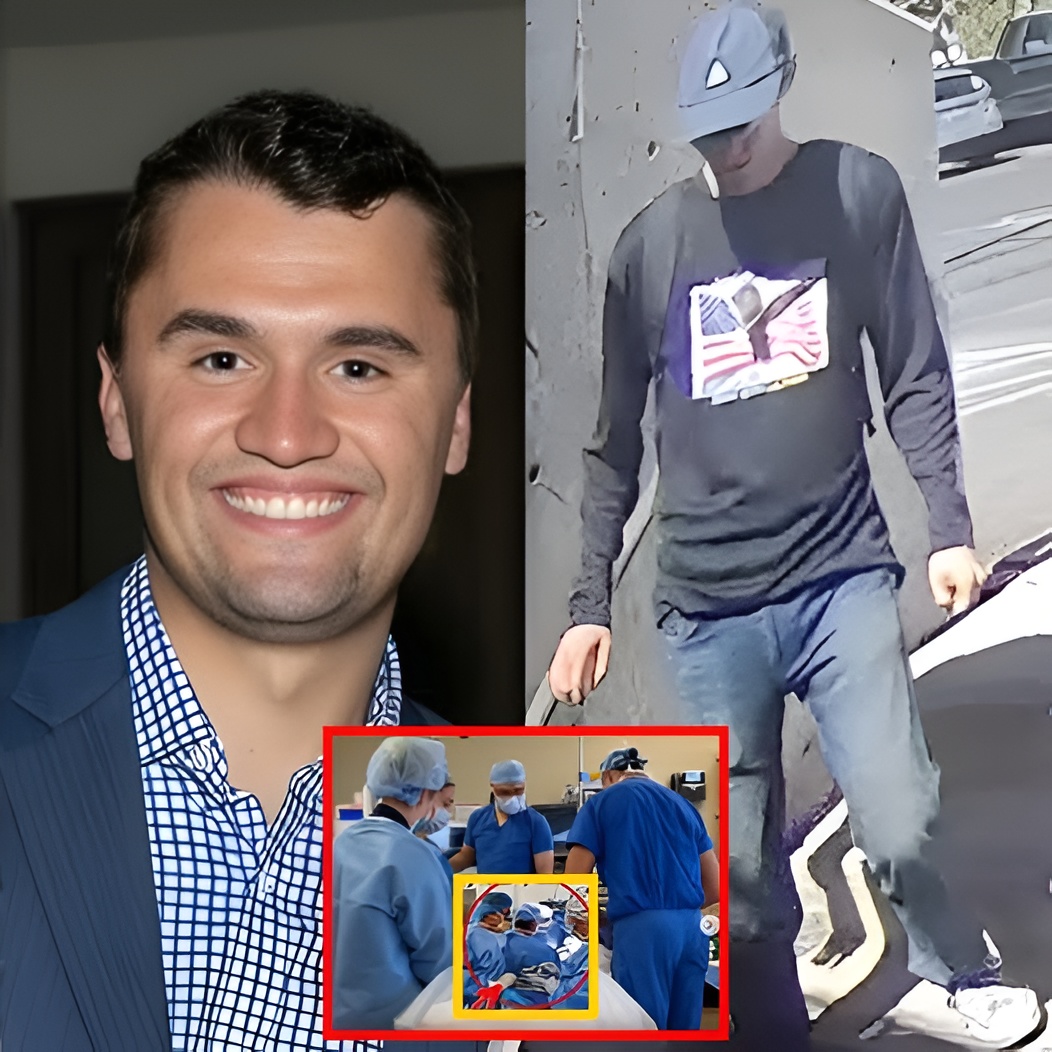Breaking News: Risking Career and Reputation — Doctor Breaks the Rules: Never-Before-Seen Video Captures Charlie Kirk’s Final Moments — You Won’t Be Able to Look Away from These Images!
The hospital corridor was quiet, almost eerily so. Machines hummed softly in the background, and the faint smell of antiseptic lingered in the air. Nobody outside the emergency room could have imagined the storm about to unfold within those walls — the very walls that had seen Charlie Kirk’s final moments.
Dr. Evelyn Carter had always been known for her professionalism, her calm demeanor even in the most chaotic situations. But tonight, something felt different. A quiet tension hung in the air, an unspoken gravity that she couldn’t ignore. She glanced at the monitors, noting the vital signs that were dropping too quickly, too steadily.
“Team, we need to move fast,” she said, her voice steady but urgent.
Yet something in the room didn’t add up. The protocols they were following felt rehearsed, almost ritualistic. And as she scanned the sheets and medical reports, a chill ran down her spine — discrepancies that should not exist. She knew what was coming, but she also knew that if she acted differently, she could lose everything: her job, her license, even her reputation.

The Final 12 Seconds
The camera in the emergency room — installed for training purposes — captured every motion, every expression, every fleeting sound. The footage was never meant for public eyes, but Dr. Carter could not stay silent. As Charlie’s breathing became shallow, the room held its collective breath. Every second stretched like an eternity.
At exactly 2:17 a.m., the monitor flatlined for a heartbeat — and for a brief moment, the room was silent. Then came the subtle, almost imperceptible movements that nobody outside could notice. Dr. Carter leaned closer, instinctively reading the vital signs, the subtle cues of life fading away. Her hands trembled, not from fear of death, but from the weight of knowing what the world was about to miss.
The Hidden Note
After the incident, as the team quietly left the room, Dr. Carter noticed a folded piece of paper in Charlie’s pocket. It wasn’t in the official inventory. The handwriting was hurried, almost desperate. It contained eight words that would change the way everyone perceived the situation. She memorized them, knowing that revealing them would raise questions no one was ready to answer.
Those words would not be forgotten. They echoed in her mind during every quiet moment: “Trust no one, not even your closest friends.”
The Public Reaction
Within hours, Dr. Carter’s decision to release the video anonymously caused a sensation. Social media exploded. Millions of people watched the 30-second clip that became an instant global phenomenon. Reactions were polarized: some viewers expressed shock, others disbelief, and many debated endlessly about what those final seconds truly meant.
No outlet dared air the full three-minute footage. Yet fragments leaked, sparking a nationwide conversation. Memes, analyses, and live-stream reactions spread like wildfire. Every viewer had a theory, and yet no one could say definitively what had transpired in those last moments.
The Hospital’s Silence
Administrators, lawyers, and public relations officials scrambled. Statements were issued, carefully worded, denying any wrongdoing while promising a thorough investigation. Yet every employee knew the truth was far messier. Doctors were silent, nurses whispered among themselves, and the medical board quietly reviewed the footage behind closed doors.
Why had the video been withheld? What did the administration fear? And most importantly, what would the public think if the full truth were revealed?

Dr. Carter’s Decision
Carter knew the risks. She knew the professional consequences, the lawsuits, the media frenzy, and the potential backlash. But she also understood something deeper: the world deserved to see the reality of life and death, unfiltered, unedited, uncensored. She uploaded the footage securely, leaving clues for journalists to verify the authenticity without revealing her identity.
The video showed not just a man’s final moments, but the humanity, the errors, the compassion, and the chaos that surrounded it. Every viewer felt it, as though they were in the room, hearing the monitor, feeling the tension, and witnessing the fragility of life.
The Mystery Deepens
Yet questions remained. Who had handwritten the note? Why had Charlie Kirk carried it in his pocket? Was there something more to his final moments than what even Dr. Carter could understand?
Investigators examined the footage repeatedly, trying to find clues. Every small gesture, every flicker of expression, every silence was analyzed. Conspiracy theories erupted. Was it negligence? Was it fate? Or was there something sinister lurking beneath the surface that nobody wanted to admit?
Society Reacts
Across the country, the video became more than news. It became a symbol of transparency, of the delicate line between life and the institution. Debates raged online: Should hospitals ever release such footage? Could the truth ever be sanitized for public consumption? And why do we, as a society, demand answers even when they might hurt us?
Conclusion / Cliffhanger
Dr. Carter remained anonymous, her identity a secret known only to a few. But the message was clear: the truth, no matter how uncomfortable, must be seen. The eight words on that note, the final seconds captured on tape, the reactions of those who witnessed it — they are now a permanent part of the conversation surrounding Charlie Kirk’s last moments.
The world had been shown a glimpse into what no one else would admit. And yet, the story was far from over. Every new viewer saw something different, every journalist interpreted it another way, and every family affected by the tragedy wondered: What else had been hidden?
